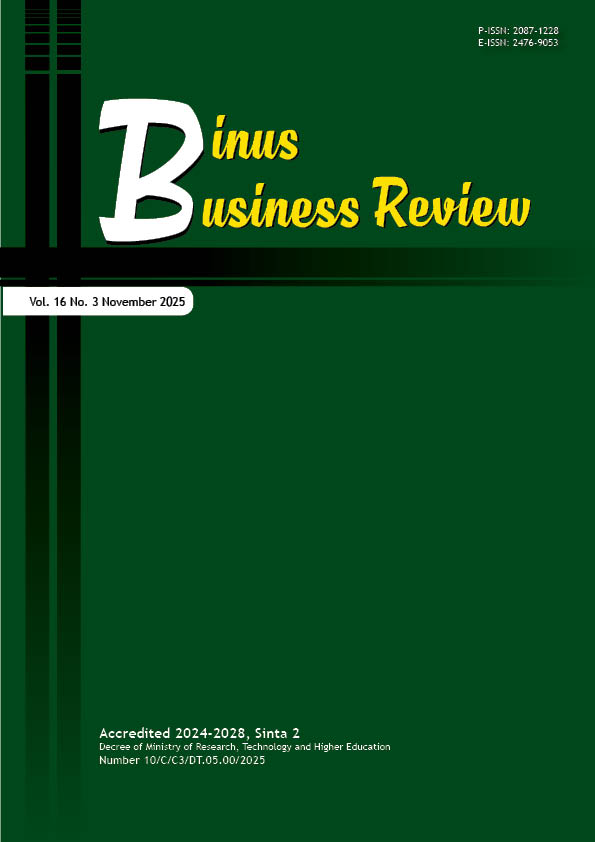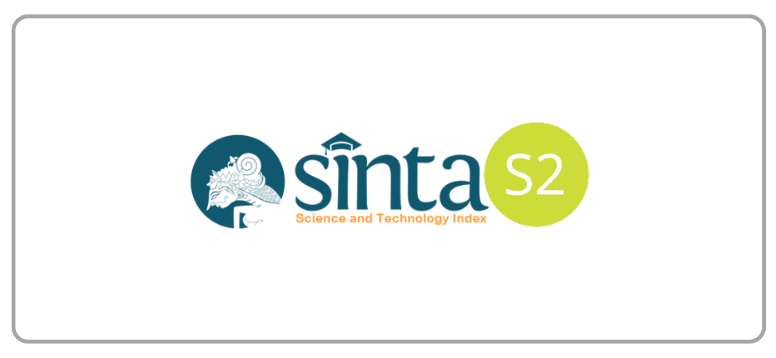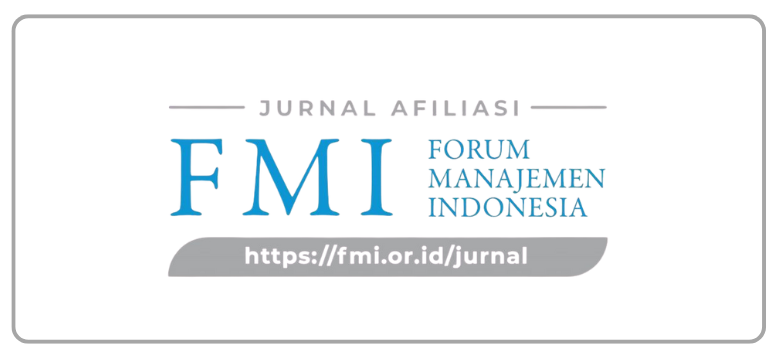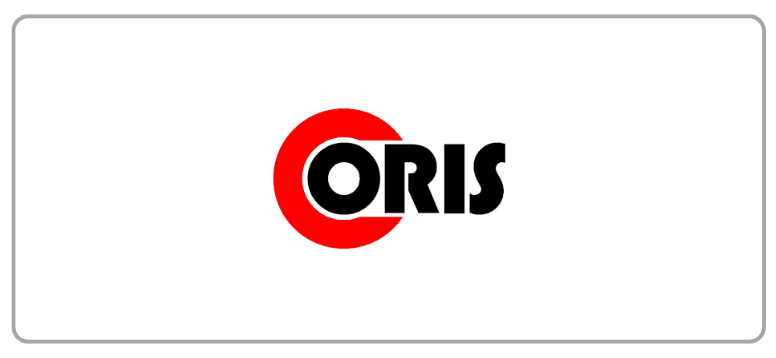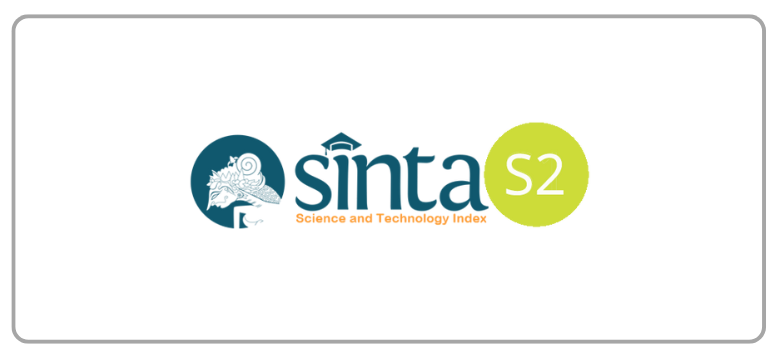Analysis of Influencing Generation Z Purchasing Decisions in East Java Through Electronic Word of Mouth (E-WOM) Mediation
DOI:
https://doi.org/10.21512/bbr.v16i3.13572Keywords:
Generation Z, purchasing decision, electronic Word of Mouth (e-WOM), influencer marketing, Fear of Missing Out (FOMO), hedonic motivationAbstract
Gen Z spends more time on social media than on television, so they are strongly encouraged to make purchasing decisions influenced by digital content. The research attempted to analyze the factors of consumer behavior with a focus on their impact on Generation Z’s purchasing decisions. In addition, researchers mediated the relationship between the factors of purchasing decisions with electronic Word of Mouth (e-WOM). The research aimed to analyze the factors that influence Generation Z’s purchasing decisions at TikTok Shop, focusing on the role of influencer marketing, Fear of Missing Out (FOMO), and hedonic motivation through the mediation of e-WOM on purchasing decisions. The research uses a quantitative approach by collecting data from 260 respondents through a purposive sampling method. Data were obtained through an online questionnaire with a Likert Scale, analyzed using SEM-PLS version 4.0. The results show that influencer marketing, FOMO, hedonic motivation, and e-WOM have a positive and significant effect on purchasing decisions. E-WOM is also proven to mediate the influence of influencer marketing and hedonic motivation on purchasing decisions, but does not mediate the influence of FOMO. Purchasing decisions are enhanced through the optimization of influencer marketing, the increased role of e-WOM as a communication strategy, and campaigns that evoke hedonistic motivation and FOMO. Researchers and practitioners can also leverage TikTok Shop as a strategic channel to quickly understand market responses. Businesses can also integrate emotional elements (hedonistic motivation and FOMO) and social elements (e-WOM and influencer marketing) into their digital marketing efforts to enhance product appeal.
References
Abdurachman, A., Arifah, A. N., Lestari, D. F., & Ridwan, R. (2023). Pengaruh motivasi belanja hedonis terhadap pembelian impulsif di e-commerce Shopee pada generasi milenial. Jurnal Ilmiah Manajemen Kesatuan, 11(1), 205–212. https://doi.org/10.37641/jimkes.v11i1.2005
Abir, T., Rahman, M. A., Nur-A Yazdani, D. M., Khan, R. H., Supty, S. S. A., & Hamid, A. B. A. (2020). Electronic Word of Mouth (e-WOM ) and consumers’ purchase decisions: Evidences from Bangladesh. Journal of Xi’an University of Architecture & Technology, 12(4), 367–382.
Adelika, Rahma, T. I. F., & Dharma, B. (2024). The influence of lifestyle and fear of missing out on repurchase intention with word of mouth as intervening in the contemporary beverage industry. (MEC-J) Management and Economics Journal, 8(2), 145–164. https://doi.org/10.18860/mec-j.v8i2.28546
Ahdiat, A. (2024, March 19). TikTok shop gabung Tokopedia, ini jumlah penggunanya. Databoks. https://databoks.katadata.co.id/teknologi-telekomunikasi/statistik/a6be2d006205170/tiktok-shop-gabung-tokopedia-ini-jumlah-penggunanya
Ahmed, R. S., & Nasir, A. (2024). Investigating the impact of influencer’s marketing on online impulsive buying behavior with the mediating role of E-WOM, fanaticism and value shopping. Pakistan Journal of Humanities and Social Sciences, 12(2), 972–986. https://doi.org/10.52131/pjhss.2024.v12i2.2148
Akyüz, A. (2013). Determinant factors influencing eWOM. Mediterranean Journal of Social Sciences, 4(11), 159–166. https://doi.org/10.5901/mjss.2013.v4n11p159
Alfarisi, A. R., & Sukaris. (2024). The influence of live streaming, Fear of Missing Out (FoMO), and E-WOM on purchase decisions in TikTok shop. Jurnal Ilmiah Manajemen Kesatuan, 12(6), 2677–2686. https://doi.org/10.37641/jimkes.v12i6.2958
Ardi, N., & Isnayanti. (2020). Structural equation modelling-partial least square to determine the correlation of factors affecting poverty in Indonesian provinces. In IOP Conference Series: Materials Science and Engineering. IOP Publishing. https://doi.org/10.1088/1757-899X/846/1/012054
Arfah, Y. (2022). Keputusan pembelian produk. PT Inovasi Pratama Internasional.
Azzahra, A. S., Wiryawan, D., & Ambarwati, D. A. S. (2023). Pengaruh motivasi belanja hedonis dan promosi penjualan terhadap pembelian implusif (Studi kasus pada Generasi Z pengguna Shopee di Bandar Lampung). INNOVATIVE: Journal of Social Science Research, 3(2), 6529–6541.
Brooks, G., Drenten, J., & Piskorski, M. J. (2021). Influencer celebrification: How social media influencers acquire celebrity capital. Journal of Advertising, 50(5), 528–547. https://doi.org/10.1080/00913367.2021.1977737
Brown, D., & Fiorella, S. (2013). Influence marketing: How to create, manage, and measure brand influencers in social media marketing. Que Publishing.
Chen, Y., Qin, Z., Yan, Y., & Huang, Y. (2024). The power of influencers: How does influencer marketing shape consumers’ purchase intentions? Sustainability, 16(13), 1–18.
Chin, W. W. (1998). The partial least squares approach for structural equation modeling. In G. A. Marcoulides (Ed.), Modern methods for business research (pp. 295–336). Lawrence Erlbaum Associates Publishers.
Christy, C. C. (2022). FoMo di media sosial dan e-WoM: Pertimbangan berbelanja daring pada marketplace. Jurnal Studi Komunikasi (Indonesian Journal of Communications Studies), 6(1), 331–357.
Devi, A. C., Savitri, C., & Faddila, S. P. (2024). Pengaruh influencer marketing dan ulasan pelanggan terhadap keputusan pembelian produk skincare The Originote di Shopee. Al-Kharaj: Jurnal Ekonomi, Keuangan & Bisnis Syariah, 6(9), 6189–6204. https://doi.org/10.47467/alkharaj.v6i9.2588
Dinh, T. C. T., Wang, M., & Lee, Y. (2023). How does the fear of missing out moderate the effect of social media influencers on their followers ’ purchase intention? Sage Open, 13(3), 1–13. https://doi.org/10.1177/21582440231197259
Elgahwash, F. O., Dowa, A., Ahmed, K., & Elhatab, A. S. (2024). Examining effective electronic word of mouth in social media on the customer’s purchase intention: A quantitively approach In Libyans’ markets. The American Journal of Management and Economics Innovations, 6(05), 87–103.
Fauzi, M. A. (2022). Partial Least Square Structural Equation Modelling (PLS-SEM) in knowledge management studies: Knowledge sharing in virtual communities. Knowledge Management & E-Learning: An International Journal, 14(1), 103–124. https://doi.org/10.34105/j.kmel.2022.14.007
Febrianti, A., & Usman, O. (2025). The impact of UGC and e-WOM in TikTok on concert ticket purchase intention: The intervening role of FOMO. International Student Conference on Business, Education, Economics, Accounting, and Management (ISC-BEAM), 3(1), 1050–1064. https://doi.org/10.21009/ISC-BEAM.013.75
Fitri, T. A., & Syaefulloh. (2023). Pengaruh Influencer marketing dan viral marketing terhadap purchase intention melalui online customer review pada fashion terkini di TikTok shop. Al Qalam: Jurnal Ilmiah Keagamaan dan Kemasyarakatan, 17(6), 3946–3971. https://doi.org/10.35931/aq.v17i6.2821
Fitrianingsih, A., Bachri, S., Muzakir, & Farid. (2025). Pengaruh content marketing dan electronic Word of Mouth (E-WoM) terhadap purchase decision produk Skin1004 yang dimediasi oleh Fear of Missing Out (FoMO) (Studi kasus pada Gen Z di Kota Palu). Entrepreneurship Bisnis Manajemen Akuntansi (E-BISMA), 6(1), 167–187. https://doi.org/10.37631/ebisma.v6i1.1830
Fujiawati, F. S., & Raharja, R. M. (2021). Pemanfaatan media sosial (Instagram) sebagai media penyajian kreasi seni dalam pembelajaran. JPKS (Jurnal Pendidikan dan Kajian Seni), 6(1), 32–44.
Goyette, I., Ricard, L., Bergeron, J., & Marticotte, F. (2010). E-WOM scale: Word of-mouth measurement scale for e-services context. Canadian Journal of Administrative Sciences, 27(1), 5–23.
Hair Jr., J. F., Hult, G. T. M., Ringle, C. M., Sarstedt, M., Danks, N. P., & Ray, S. (2021). Partial Least Squares Structural Equation Modeling (PLS-SEM) using R: A workbook. Springer Nature.
Hanin, H. T., Savitri, C., & Faddila, S. P. (2024). Pengaruh kredibilitas influencer dan e-WOM (electronic Word of Mouth) terhadap minat beli produk kecantikan lokal Azarine Cosmetic. Al-Kharaj : Jurnal Ekonomi, Keuangan & Bisnis Syariah, 6(9), 5956–5969. https://doi.org/10.47467/alkharaj.v6i9.2541
Indrabayu, A., & Destiwati, R. (2022). Pengaruh komunikasi intrapersonal dan fear of missing out terhadap hedonisme pada Generasi Z di Denpasar. Management Studies and Entrepreneurship Journal, 3(4), 2169–2175.
Ishomi, A. R., Fatimah, S. E., & Curatman, A. (2025). The impact of neuromarketing and influencer marketing on the decision process of Generation Z consumers on the purchase of halal cosmetics. Edelweiss Applied Science and Technology, 9(1), 1019–1033. https://doi.org/10.55214/25768484.v9i1.4306
Jayanthi, N. K. Z. D., & Suprapti, N. W. S. (2024). Peran motivasi belanja memediasi pengaruh ewom terhadap niat beli produk melalui media sosial TikTok. E-Jurnal Ekonomi dan Bisnis Universitas Udayana, 13(3), 447–457. https://doi.org/10.24843/eeb.2024.v13.i03.p03
Kang, I., He, X., & Shin, M. M. (2020). Chinese Consumers’ herd consumption behavior related to Korean luxury cosmetics: The mediating role of fear of missing out. Frontiers in Psychology, 11, 1–13. https://doi.org/10.3389/fpsyg.2020.00121
Kautish, P., Purohit, S., Filieri, R., & Dwivedi, Y. K. (2023). Examining the role of consumer motivations to use voice assistants for fashion shopping: The mediating role of awe experience and eWOM. Technological Forecasting and Social Change, 190, 1–14. https://doi.org/10.1016/j.techfore.2023.122407
Kemp, S. (2024, February 21). Digital 2024: Indonesia. Data Reportal. https://datareportal.com/reports/digital-2024-indonesia
Kotler, P., & Keller, L. K. (2016). Marketing management (15th ed.). Pearson Education.
Kusumo, S. S. B., Palumian, Y., Marchyta, N. K., & Sahetapy, W. L. (2024). Peranan electronic word of mouth dan fear of missing out dalam membentuk purchase intention produk Mixue di Surabaya. Jurnal Ilmiah Manajamen dan Akuntansi, 1(4), 201–211.
Lestari, F. A., & Hayadi, I. (2024). Hedonic behavior in shopee live shopping: Social media marketing, celebrity endorser, and e-WOM on impulse buying. Manajemen dan Bisnis, 23(1), 1–18.
Mahmud, D., Heryanto, F. N., Muzaki, H., & Mustikasari, F. (2023). The influence of hedonic motivation, influencer marketing on purchase decision with FOMO (Fear of Missing Out) as mediation. International Journal of Professional Business Review, 8(11), 1–29. https://doi.org/10.26668/businessreview/2023.v8i11.3834
Manafe, L. A., Wibowo, B. S., & Nugroho, D. C. (2022). Menelusuri pembelian impulsif: Dampak belanja hedonis, gaya hidup belanja, dan pengiriman gratis di kalangan mahasiswa. Jurnal Ilmu Manajemen (JIM), 13(1), 23–38.
Morsi, N., Sa, E., & Silva, J. (2025). Walking away : Investigating the adverse impact of FOMO appeals on FOMO-prone consumers. Business Horizons, 68(2), 197–212. https://doi.org/10.1016/j.bushor.2024.11.001
Myrilla, S., & Dewi, F. I. R. (2022). Hedonis sebagai moderator pada fomo dan conformity consumption behavior remaja pengguna smartphone X. Jurnal Muara Ilmu Sosial, Humaniora, dan Seni, 6(2), 507–516.
Parolin, C. F., & Boeing, R. (2019). Consumption of boutique hotel experiences as revealed by electronic word-of-mouth. Tourism & Management Studies, 15(2), 33–45. https://doi.org/10.18089/tms.2019.150203
Permatasari, S. P., & Setyowibowo, F. (2024). Analisis diskriminan budaya, gaya hidup, e-WOM, dan FOMO terhadap keputusan pembelian online berdasarkan online buying characters pada mahasiswa FKIP UNS. INNOVATIVE: Journal of Social Science Research, 4(4), 10335–10344.
Pham, T. T., Thi, L., Nguyen, L. T. T., & To, N. M. (2025). FOMO (Fear Of Missing Out) and social media influencers: Exploring their impact on impulsive buying behavior among young TikTok users in Tra Vinh City. HCMCOUJS - Economics and Business Administration, 15(6), 164–180. https://doi.org/10.46223/HCMCOUJS.econ.en.15.6.3977.2025
Pitaloka, P. D., & Badriyah, N. (2024). The effect of fashion involvement, shopping lifestyle and hedonic shopping value on implement buying of fashion products in the Shopee application (A study of students of the Faculty of Economics and Business, Islamic University of Lamongan). International Journal of Economics and Management Research, 3(3), 310–319. https://doi.org/10.55606/ijemr.v3i3.430
Pratama, A. S., Ilham, R., Sutomo, Hermawan, A., & Wardhana, L. W. (2024). The effects of social media content, influencer marketing and customer reviews on purchasing decisions. International Journal of Science, Technology & Management, 5(2), 485–489.
Przybylski, A. K., Murayama, K., DeHaan, C. R., & Gladwell, V. (2013). Motivational, emotional, and behavioral correlates of fear of missing out. Computers in Human Behavior, 29(4), 1841–1848. https://doi.org/10.1016/j.chb.2013.02.014
Ramdani, A. Z. L., Sulhaini, & Handayani, B. R. (2024). The influence of electronic word of mouth and hedonic shopping motivation on impulse buying with fear of missing out as a moderating variable. Path of Science, 10(1), 3015–3024. https://doi.org/10.22178/pos.100-27
Ratnaningsih, Y. R., & El-Halidy, A. (2022). Pengaruh FOMO, kesenangan berbelanja dan motivasi belanja hedonis terhadap keputusan pembelian tidak terencana di e-commerce Shopee pada waktu Harbolnas. Eqien - Jurnal Ekonomi dan Bisnis, 11(3), 1477–1487.
Razak, M. (2016). Perilaku konsumen. Alauddin University Press.
Riama, C. O. (2021). Peran influencer dalam proses electronic word of mouth untuk meningkatkan persepsi merek. Jurnal Manajemen Komunikasi, 5(2), 156–175. https://doi.org/10.24198/jmk.v5i2.27628
Royan, F. M. (2005). Marketing celebrities: Selebriti dalam iklan dan strategi selebriti memasarkan diri sendiri. PT Elex Media Komputindo.
Saavedra, C. M. C., & Bautista Jr., R. A. (2020). Are you “in” or are you “out”?: Impact of FoMO (Fear of Missing Out) on Generation Z’s Masstige- Brand apparel consumption. Asia-Pacific Social Science Review, 20(2), 106–118. https://doi.org/10.59588/2350-8329.1305
Said, L. R., Anggela, M., & Fariany, G. R. (2023). Online purchase decision of Gen Z students at Shopee marketplace. International Journal of Professional Business Review, 8(5), 1–21.
Sarioglu, C. İ. (2023). The effect of customer perceptions concerning online shopping, viral marketing and customer loyalty on purchasing behaviour. International Journal of Management Economics and Business, 19(2), 348–370. http://dx.doi.org/10.17130/ijmeb.1210803
Santiago, J. K., Lisboa, U. De, & Lisbon, I. (2020). Digital influencers: An exploratory study of influencer marketing campaign process on Instagram. The Online Journal of Applied Knowledge Management, 8(2), 31–52. https://doi.org/10.36965/OJAKM.2020.8(2)31-52
Saraswati, A. R., & Giantari, I. G. A. K. (2022). Brand image mediation of product quality and electronic word of mouth on purchase decision. International Research Journal of Management, IT and Social Sciences, 9(1), 97–109. https://doi.org/10.21744/irjmis.v9n1.2012
Sari, P. S. P., & Darma, G. S. (2024). The Impact of viral and influencer marketing on Skintific purchase decisions: Exploring the mediating role of FoMO. Tec Empresarial, 19(1), 453–470. https://doi.org/10.1229/tecempresarialjournal.v19i1.431
Septia, M. T., & Surianto, M. A. (2024). The impact of social media marketing, reviews and fear of missing out on purchase intention. Jurnal Ilmiah Manajemen Kesatuan, 12(6), 2667–2676. https://doi.org/10.37641/jimkes.v12i6.2985
Smuda. (2018). Influencer marketing. A measurement instrument to determine the credibility of influencers: Revealing the effect of specific factors on consumers’ product preferences and buying decisions. GRIN Verlag.
Somba, W. E., Sunaryo, & Mugiono. (2018). Pengaruh nilai hedonis dan nilai utilitarian terhadap behavioral intention, dengan Word of Mouth (WOM) sebagai variabel mediasi. Jurnal Manajemen & Kewirausahaan, 6(1), 82–92.
Sri, N., Parasari, M., Gede, I. D., Putra, S., Mandira, I. M. C., & Dyah, P. (2024). Peran digital marketing, E-WOM, dan kualitas produk terhadap keputusan pembelian di Adhi Fashion Garment. Jurnal Ecodemica Jurnal Ekonomi Manajemen dan Bisnis, 8(8), 110–118.
Subhaktiyasa, P. G. (2024). PLS-SEM for multivariate analysis : A practical guide to educational research using SmartPLS. EduLine: Journal of Education and Learning Innovation, 4(3), 353–365. https://doi.org/10.35877/454RI.eduline2861
Sugiyono, D. (2012). Metode penelitian kuantitatif, kualitatif, dan R&D. Alfabeta.
Sulistianti, R. A., & Sugiarta, N. (2022). Konstruksi sosial konsumen online shop di media sosial TikTok (Studi fenomenologi tentang konstruksi sosial konsumen Generasi Z pada online shop Smilegoddess di media sosial TikTok). Jurnal Ilmu Sosial dan Pendidikan (JISIP), 6(1), 3456–3466.
Tariyal, A., Bisht, S., Rana, V., Roy, S., & Pratap, S. (2022). Utilitarian and hedonic values of eWOM media and online booking decisions for tourist destinations in India. Journal of Open Innovation: Technology, Market, and Complexity, 8(3), 1–17. https://doi.org/10.3390/joitmc8030137
Thuy, P. T., Huong, N. T. G., & Lan, D. T. K.. (2023). The Impact of the fear of missing out on purchasing trendy fashion products among young consumers on social media platforms. International Journal of Advanced Multidisciplinary Research and Studies, 3(5), 1240–1249.
Travers, M. (2020, March 31). Four facts about FOMO. Psychology Today. https://www.psychologytoday.com/us/blog/social-instincts/202003/four-facts-about-fomo
Triono, D., & Fourqoniah, F. (2024). Pengaruh store atmosphere, atribut produk dan motif hedonic terhadap keputusan pembelian pada Starbucks Coffee di Samarinda. Jurnal Ilmiah Manajemen, Ekonomi, & Akuntansi (MEA), 8(2), 67–83. https://doi.org/10.31955/mea.v8i2.4009
Utami, W. C. (2017). Manajemen ritel: Strategi dan implementasi operasional bisnis ritel modern di Indonesia. Salemba Empat.
Vindy Zalfa, K., & Indayani, L. (2024). Analysis of live streaming, Electronic Word of Mouth (E-WOM) and affiliate marketing on purchasing decision for fashion trend Productsi at the Shopee marketplace (Case study of Shopee users). Management Studies and Entrepreneurship Journal, 5(1), 1291–1305.
Wacono, T. D., Lukitaningsih, A., & Maharani, B. D. (2021). Pengaruh electronic Word of Mouth (e-WoM), kelompok teman sebaya (peer group) dan gaya hidup hedonis pada keputusan pembelian konsumen Filosofi Kopi Jogja. Jurnal Bingkai Ekonomi (JBE), 6(1), 45–57.
We Are Social. (2024, January 31). Digital 2024: 5 billion social media users. https://wearesocial.com/id/blog/2024/01/digital-2024-5-billion-social-media-users/
Widiarto, W., Cahyo, S. A. N., Nugroho, J., & Sudrajat, D. (2024). Analysis of factors affecting the maintenance performance of heavy equipment in construction projects (Case study in Morowali project, Sulawesi). Eduvest-Journal of Universal Studies, 4(12), 11919–11934.
Yangkluna, S., Ketkaew, T., Wongwandee, S., Phacharoen, S., & Dansiri, W. (2022). Factors of micro influencers affecting purchase decision of millennial consumers via electronic Word-of-Mouth (e-WOM). UBRU International Journal Ubon Ratchathani Rajabhat University, 2(1), 15–24.
Yastuti, A. W., & Irawati, Z. (2023). The influence of hedonic shopping motivation, fashion involvement, and sales promotion on impulse buying in e-commerce Shopee. International Journal of Current Science Research and Review, 6(12), 8652–8659. https://doi.org/10.47191/ijcsrr/V6-i12-111
Younas, A., Ashraf, H. A., & Manzor, T. (2023). Unveiling the power of instagram influencer marketing exploring its influence on purchase intentions and eWOM with celebrity endorsement as mediator. Global Economics Review, VIII(I), 241–256. https://doi.org/10.31703/ger.2023(viii-i).21
Yulindasari, E. R., & Fikriyah, K. (2022). Pengaruh e-WoM (Electronic Word of Mouth) terhadap keputusan pembelian kosmetik halal di Shopee. Journal of Islamic Economics and Finance Studies, 3(1), 55–69.
Yunitasari, M. D. (2022). Pengaruh motivasi dan kepercayaan konsumen terhadap keputusan pembelian menggunakan aplikasi Shopee. Jurnal Ekonomi dan Bisnis, 9(2), 325–330.
Downloads
Published
How to Cite
Issue
Section
License
Copyright (c) 2025 Debby Yunitasari, Fahrurrozi, Muhammad Isbad Addainuri

This work is licensed under a Creative Commons Attribution-ShareAlike 4.0 International License.
Authors who publish with this journal agree to the following terms:
a. Authors retain copyright and grant the journal right of first publication with the work simultaneously licensed under a Creative Commons Attribution License - Share Alike that allows others to share the work with an acknowledgment of the work's authorship and initial publication in this journal.
b. Authors are able to enter into separate, additional contractual arrangements for the non-exclusive distribution of the journal's published version of the work (e.g., post it to an institutional repository or publish it in a book), with an acknowledgment of its initial publication in this journal.
c. Authors are permitted and encouraged to post their work online (e.g., in institutional repositories or on their website) prior to and during the submission process, as it can lead to productive exchanges, as well as earlier and greater citation of published work.
USER RIGHTS
All articles published Open Access will be immediately and permanently free for everyone to read and download. We are continuously working with our author communities to select the best choice of license options, currently being defined for this journal as follows: Creative Commons Attribution-Share Alike (CC BY-SA)
